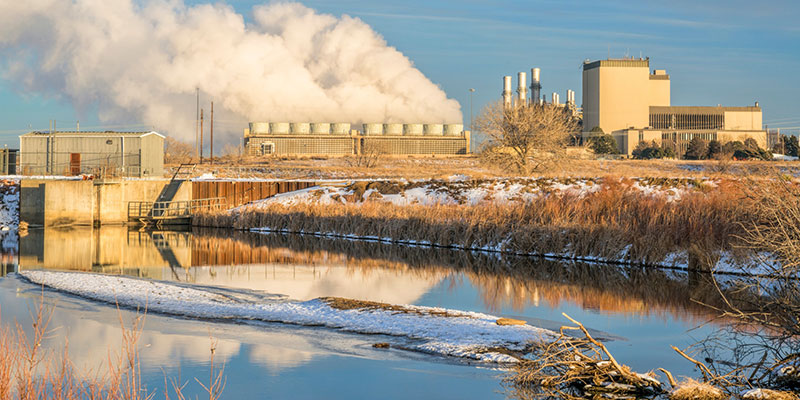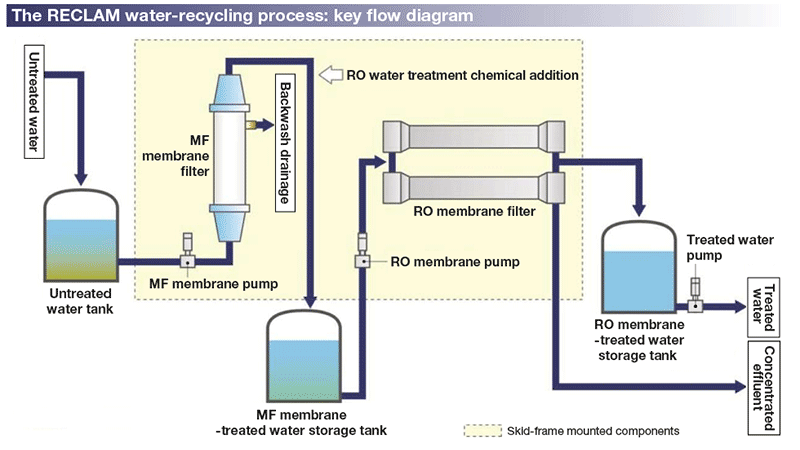Difficulties and Solutions in Hazardous Waste Water Therapy
The therapy of commercial wastewater provides a diverse selection of obstacles, ranging from strict governing compliance to the ins and outs of cost administration and technological restrictions. The variability in waste structure additionally complicates the performance of standard therapy techniques, typically leading to risen functional expenses. Nonetheless, emerging solutions such as innovative oxidation procedures and cutting-edge funding models reveal guarantee in resolving these issues. As markets grapple with the demand for sustainable techniques, the question remains: what techniques will inevitably cause an equilibrium between compliance, cost-efficiency, and environmental responsibility?
Regulatory Conformity Obstacles
Just how can industrial centers browse the complex landscape of regulative conformity in wastewater therapy? The regulative structure controling wastewater monitoring is complex, often varying by territory and sort of industry. Facilities has to stick to government, state, and regional guidelines that dictate effluent quality standards, discharge limitations, and surveillance needs. Failing to comply can result in severe charges, consisting of fines and operational closures.
To effectively manage these compliance obstacles, centers must implement robust monitoring and reporting systems that guarantee real-time information collection and evaluation. Regular audits and threat analyses can determine prospective conformity spaces, enabling positive modifications in therapy processes. Staff member training programs concentrating on regulative understanding and best techniques are important to foster a society of conformity within the company.
In addition, engaging with regulative companies can offer useful insights and make clear uncertain policies. Facilities might additionally take advantage of speaking with ecological experts that focus on wastewater treatment conformity, making certain that they remain informed of developing regulations. By embracing these techniques, commercial facilities can not only satisfy compliance requirements but additionally enhance their operational efficiency and environmental stewardship.
Expense and Economic Obstacles
Navigating regulative conformity in wastewater treatment frequently provides substantial monetary challenges for commercial centers. The expenses linked with executing needed treatment technologies, keeping conformity with rigorous policies, and managing operational costs can be discouraging. Lots of companies face high initial resources expenditures for the construction or updating of wastewater therapy plants, which may strain budget plans, specifically for small and medium-sized enterprises.
In addition, recurring operational expenses, including chemical, upkeep, and labor inputs, add to the financial concern. The unpredictability of changing power prices and the potential requirement for additional investments to fulfill progressing regulations aggravate these financial stress. In lots of cases, the lack of economic rewards or support from government bodies makes it a lot more tough for businesses to validate financial investments in sophisticated treatment systems.
Additionally, the economic viability of wastewater treatment options is usually questioned, specifically for markets with limited revenue margins. It is crucial for industrial centers to check out affordable approaches, such as adopting cutting-edge funding alternatives, engaging in collaborations, and leveraging arising technologies that can aid minimize these economic obstacles while guaranteeing compliance with ecological requirements.

Technological Limitations
Many technical restrictions hinder the effectiveness of commercial wastewater therapy processes. One substantial challenge is the insufficiency of existing treatment modern technologies to address intricate pollutants.
In addition, the scalability of therapy modern technologies presents a challenge. While some sophisticated approaches, like membrane filtration or innovative oxidation, reveal assurance in regulated atmospheres, their imp source implementation on a bigger scale can be technically challenging and excessively expensive. Maintenance and operational complexities additionally complicate the adoption of these systems, especially for smaller sized industries with limited technical know-how.
The integration of real-time monitoring innovations likewise continues to be insufficient in lots of therapy centers. Without effective tracking systems, drivers can not properly analyze therapy performance or detect potential failings, bring about inconsistent effluent high quality. Dealing with these technical constraints via research study and advancement, alongside investment in ingenious options, is crucial for boosting the effectiveness of commercial wastewater treatment and making certain regulatory conformity.
Variability in Waste Make-up
In the world of commercial wastewater therapy, the irregularity in waste structure presents a formidable obstacle. Industries produce wastewater with varied features, affected by elements such as manufacturing processes, resources, and functional practices. This diversification complicates the treatment procedure, as traditional systems frequently battle to successfully deal with the variety of toxins present.
As an example, wastewater from food handling may have high levels of organic issue, while effluents from chemical production can include heavy steels and dangerous materials. This difference demands versatile therapy strategies to make sure conformity with environmental policies and secure public health. Furthermore, changes in waste composition can happen gradually, affected by modifications in manufacturing timetables, maintenance tasks, or the introduction of new products.

Ingenious Treatment Solutions
Ingenious treatment remedies are essential for dealing with the complexities of commercial wastewater administration. Typical techniques frequently fall brief in properly getting rid of a broad range of contaminants, especially in centers with varied effluent streams. Current advancements concentrate on More hints integrating sophisticated modern technologies to boost treatment performance and sustainability.
One promising method is making use of innovative oxidation procedures (AOPs), which utilize effective oxidants to degrade natural contaminants. AOPs, consisting of photocatalysis and ozonation, can considerably minimize poisonous substances and improve effluent top quality. Additionally, membrane bioreactor (MBR) technology has actually acquired traction, integrating biological therapy with membrane layer purification, resulting in top notch effluent and decreased impact.
One more innovative remedy is the implementation of resource recuperation systems. Techniques like anaerobic food digestion not just treat wastewater but additionally create biogas, which can be used as a renewable resource resource. In addition, the fostering of expert system and artificial intelligence versions can optimize therapy procedures by anticipating variants in wastewater make-up, thus improving operational efficiency.
These ingenious solutions not just address regulative conformity yet also promote ecological sustainability, leading the method for an extra reliable and resistant commercial ecological community.
Conclusion
In final thought, dealing with the obstacles of commercial wastewater treatment needs a diverse strategy that incorporates governing conformity, expense management, and technical advancements. A dedication to continual renovation in treatment methods will eventually add to the effective administration of industrial wastewater and ecological protection.
The therapy of commercial wastewater provides a diverse array of obstacles, varying from rigid regulative compliance useful content to the intricacies of price monitoring and technical restrictions. Industrial Waste Water Treatment.Navigating regulative compliance in wastewater treatment typically provides significant financial difficulties for industrial facilities. Addressing these technical constraints via study and development, alongside financial investment in cutting-edge remedies, is vital for enhancing the efficiency of commercial wastewater therapy and making certain regulative conformity
Wastewater treatment centers have to spend in robust monitoring systems and adaptable therapy technologies qualified of accommodating differing influent features.In final thought, attending to the obstacles of industrial wastewater treatment calls for a complex technique that integrates governing compliance, cost administration, and technical developments.